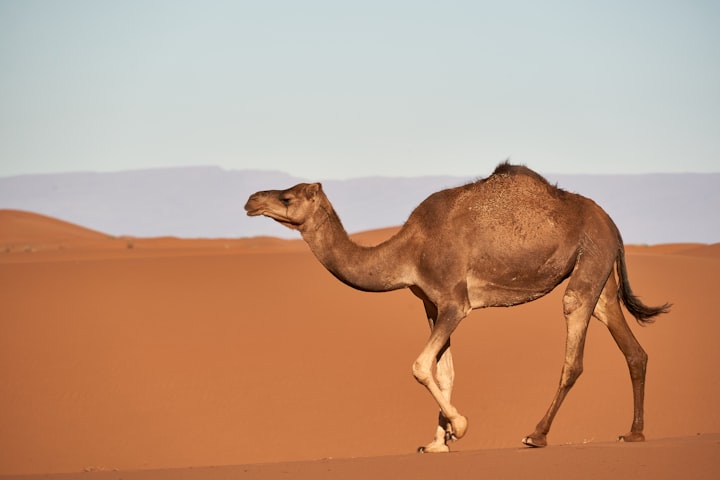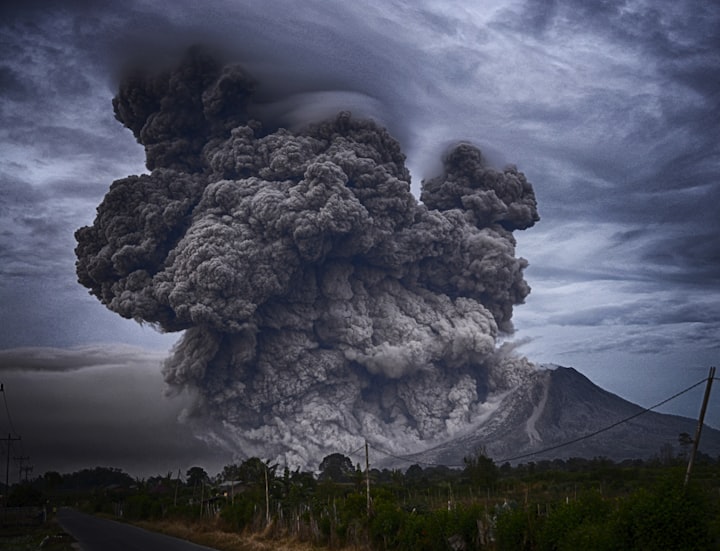While 5-ton elephants can be eaten, camels have almost no natural predators, so why don't predators eat them?
Nature is cruel and there are no permanent winners

What a big camel
Camels are the largest of the desert animals and there are only two types of camels, the dromedary and the Bactrian, which can grow to over 500 kg, with the Bactrian camel being the superior, with the largest individual being 680 kg.
This is because the Bactrian camel lives in higher dimensional deserts and has a thicker fat layer in the winter to cope with the cold climate.
The Bactrian camel, on the other hand, lives in tropical deserts, where it does not need to store fat outside its hump.
However, regardless of the dimension of the desert, it is a very harsh living environment, and other small animals living in the desert are as small as possible to reduce their size and water loss, but camels are so big.
So why don't camels stay in the grasslands and run into the desert?
Today's camels live in Asia and Africa, but they have their roots in North America, arriving in Asia, Europe, and Africa from North America through the Bering Strait about 10 million years ago.
The alpaca, a relative of the South American gods, is a member of the camelid family.
Camels are relatively large, and historically there have been giant camels weighing over 3 tons. They would have been strong contenders among herbivores, but they were taught to be camels by other herbivores in Asia and Europe.
The camel also ruminates, but it does so in a more primitive way, with only three stomachs. Its other distant relative, the ruminant suborder, is even more ascendant, with four stomachs. With such a magical blow, the camel loses the battle.
The llama's relative, the alpaca
Afterward, the earth suffered an environmental catastrophe, which led to a total collapse of the camels migrating to the grasslands of Asia and Africa, and eventually, they had to retreat to the desert, becoming the representative of mammals in the desert.
The camel's hump, which evolved while crossing the Bering Strait, can be used to combat the harsh desert climate.
Many people think that the camel's hump is used to store water, but it is not. Their main component is fat, which is 40 liters.
If food and water cannot be found in the desert, the camel will consume the fat inside the hump to support it.
More importantly, few predators in the desert can threaten the camel's life.
Predators in the Desert
Camels are not without natural predators, they are just more drought tolerant than predators.
The main natural predator of the African dromedary camel is the desert-dwelling lion, known as the desert lion.
Desert lions live mainly on the fringes of the desert and are slimmer than the average savannah lion.
Lions hunt in teams, and even elephants can be assassinated by them, not to mention camels.
Africa's Desert Lions
However, desert lions cannot go deep into the desert hinterland or they will die from water loss and heat, but camels can go deep into the desert hinterland and stay there for a long time.
Generally, desert lions hunt close to water sources or oases so that they can search for prey in the desert without risking dehydration.
Although a dromedary can live in the desert for a long period, it cannot go without food and water.
If a desert lion is encountered in the process, the camel may be eaten by the lion.
Desert lions guarding water sources
As for the Bactrian camels living in the Asian region, their main enemy is the Mongolian wolves living in the desert.
Mongolian wolves are much smaller than lions, and Bactrian camels weigh more than dromedaries, so wolves have less chance of success in predating camels than lions.
These wolves also guard water sources and oases and do not actively hunt camels in the desert because it is too dangerous and they may not find the camels and take their own lives.
Mongolian wolves in the desert
Looking at it this way, camels are also tough natural enemies in the desert and are not completely without a chance, so why are camels rarely found eaten in the wild?
Camels have been on earth for over 10 million years, so how can they be defeated so easily?
When faced with predators, camels have their means of coping.
Camel herd in the wild
Camel's escape
Camels are not very good-tempered and will attack if they are annoyed. Unlike horses that kick with their hooves, cows, and sheep that use their horns, and pigs that use their mouths, camels will bite directly.
This is because camels have canine-like teeth that, when combined with their chewing power, can wreak havoc.
Camels have 34 teeth, including four canines, which males use to fight during courtship season, often causing serious damage, or at least chewing through thick fur.
When a camel is angry, he will not let go once he bites down, using his bite force and great strength to lift his enemy.
The camel's canine teeth
Camels have a thick cuticle on the inside of their mouths, which allows them to not even be afraid of cacti.
Camels can chew cactus like a cookie, and spikes are no problem at all.
This iron mouth also allows camels to bite down on their enemies and then not let go of their mouths even after they struggle, but the more they struggle, the more friction they have.
The size of the camel itself is also a huge weapon, its running speed can reach 40 to 50 kilometers per hour, imagine a half-ton wall of flesh hitting up what is the feeling?
That is bound to be dizzy and even broken bones.
Camel eating cactus
If the camels find that they can't fight, then they go on a rampage, running at 60 km/h towards the desert hinterland.
Predators do not dare to follow the camels into the depths of the desert, otherwise, they will be lost in the desert and unable to find their way out, and finally trapped in the sand.
Therefore, predation on camels in the desert is a very dangerous thing. First of all, camels are very large and require huge physical effort to subdue them.
Secondly, the camel is also very strong in fighting, especially with its teeth. Unlike normal herbivores, camels have canine teeth and a very strong bite.
Camel Riding Competition
The last thing is that the camel has a retreat. It can dive headlong into the desert hinterland, but the predator will not dare to enter and watch the camel escape.
Most of the camel remains seen in the desert are the natural death of the old and sick, and there are few signs of gnawing.
Of course, another reason why camels are rarely found eaten is that the number of wild camels is very scarce.
Three camels may be talking
Camels in the wild
There are tens of millions of camels living on the planet, but the vast majority are domesticated, and there are no wild dromedaries left in the wild in Africa.
A small number of wild Bactrian camels, only about 500, live in the Mongolian and Xinjiang regions of Asia, and they are critically endangered species.
In the wild, it is difficult for zoologists to find a wild bipedal camel, let alone find their carcasses eaten by wild animals.
Domesticated camels all live in human societies and have a particularly low probability of encountering their natural predators.
A camel in the Gobi Desert in China
This is why people rarely see camels being eaten and assume over time that they have no natural predators.
In fact, according to fossils, camels migrated to desert areas because they could not survive on the grasslands.
However, domesticated camels can be rewilded, as has been proven in Australia.
Australia imported several dromedary camels to Arab countries when the railroad was built in the 19th century, and they were abandoned in the Australian outback after the railroad was completed.
Camels in Australia
As a result, the camels made their home in Australia and bred over 700,000 of them, almost chewing up the country.
Eventually, Australia had to go to war against camels, shooting a certain number of them every year.
Camels, like horses, are now largely difficult to exterminate because they have latched on to humans.
People have also developed camel industries, including tourism, culture, and camel products, such as blankets made of camel hair and cheese made of camel milk, which is even more popular than milk in some areas.
About the Creator
Flagler Danzig
The talent is 1% inspiration adds on 99% sweat, certainly, does not have that 1% inspiration, in the world all sweat to put or bring together also only is the sweat!






Comments (1)
Continue to create